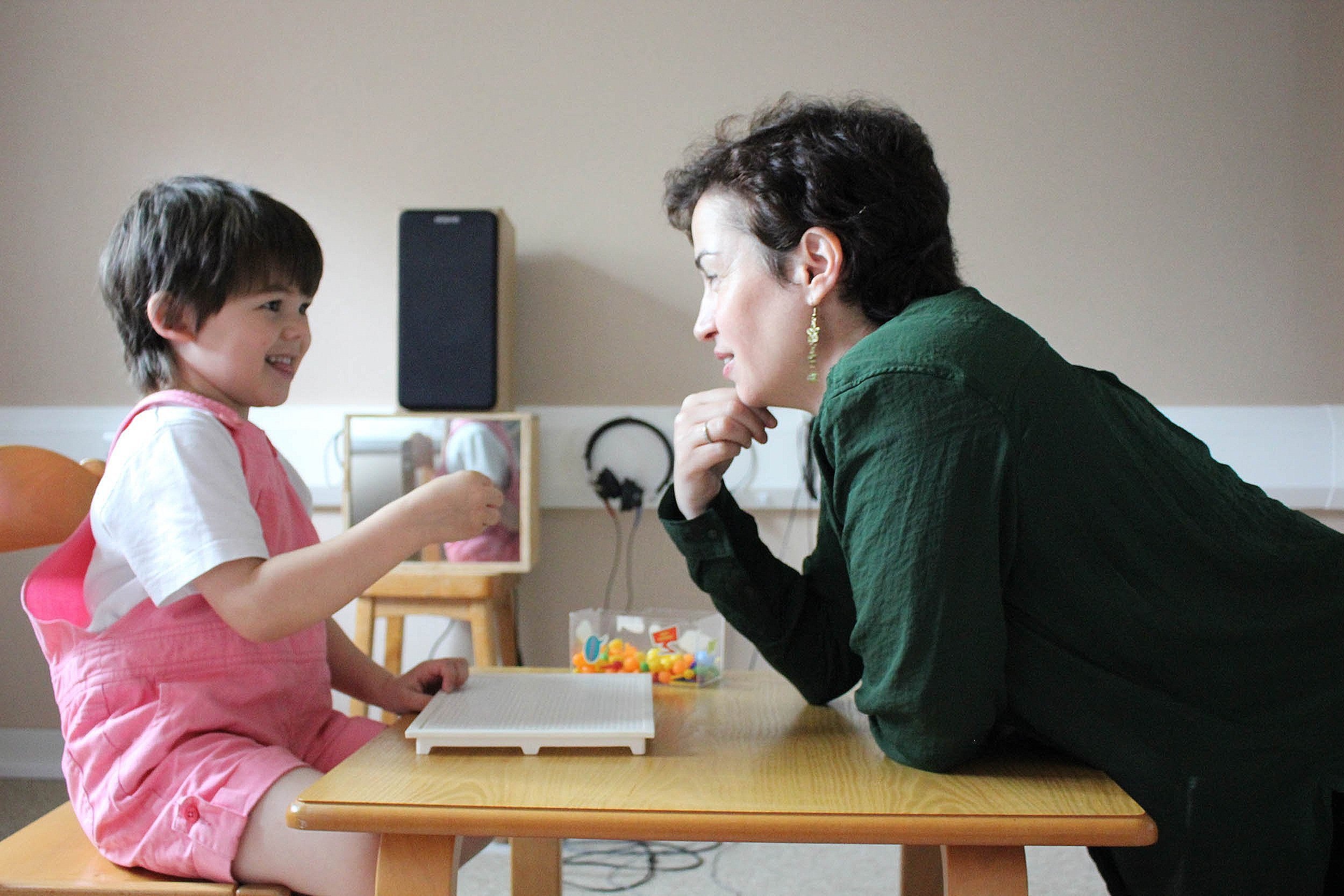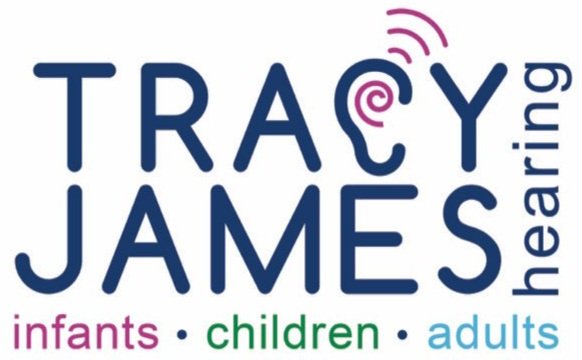
Children’s Hearing Tests
We offer children’s hearing assessments for children aged *6 months and above.
*Please note that whether we conduct hearing assessments on infants from 6-8 months will depend upon their individual development
We offer wax removals for children aged 9+ years (4-9 years with a referral letter from GP)
We will usually start our children’s appointments with a full history regarding your child, family and hearing. We tend to start the appointment by looking into the child’s ear with an otoscope (otoscopy) and the overall health of their outer and middle ear is assessed with tympanometry.
Tracy or Louise will discuss with you what type of hearing test is suitable (in terms of developmental readiness), and they will explain exactly how the test works.
You can read an overview about the different assessments below.
Assessment Types
Click on the assessment type under each age range to learn more.
Visual Reinforcement Audiometry
This hearing test can be carried out on children with a developmental age of 6 months to 2 years and requires 2 Audiologists. It involves playing a sound through a loudspeaker while your child is sat on your lap or in his/her own chair. As your child turns his/her head in response to the sound, they are rewarded visually (e.g. moving puppet or video picture). At first the test is carried out using both ears, then the test can be carried out using one ear at a time using headphones or insert earphones.
Here is a video (from Forth Valley Hospital) of visual re-enforcement audiometry for children under 2 ½
Tympanometry
This test involves putting a soft tip into your child’s ear. They will experience a slight change in pressure in their ears. Tympanometry measures the ear canal volume, pressure and degree of movement of the eardrum. The results are interpreted as part of a battery of tests to assess the health of the ear drum and middle ear and can be used to monitor glue ear, grommets or perforations, for example.
Play/Performance
This hearing test can be carried out on children with a developmental age of 2 years to 5 years. It involves your child actively listening for a sound and doing something in response, e.g. putting a block in a bucket.. This test can be carried out using both ears together, or each ear separately using headphones or insert earphones.
Below are 2 short videos demonstrating Play/Performance. The videos were taken at our dedicated pediatrics room at our Wharf Street Clinic, Newbury.
Speech Testing
This test involves your child listening to (age-appropriate) words or sentences with or without their hearing aids / listening devices. Their response may be pointing to a corresponding picture or toy, or repeating the word or sentence back to the audiologist. The test can be carried out at different hearing levels/noise to simulate more difficult listening environments. Speech testing gives the child or parent an opportunity to evaluate how well their child is able to perceive speech in different listening situations.
Pure Tone Audiometry
This hearing test can be carried out on children with a developmental age of over 5 years. It involves your child wearing headphones, actively listening for quiet sounds of different pitches, and pressing a button when they hear it.
Auditory Processing Assessment
Auditory Processing Disorder (APD) is typified as poor understanding of speech and non-speech sounds. However, in most cases a hearing test will show hearing ‘within the normal range’.
Children who have APD find that it impacts on their everyday life. They can struggle when listening to speech – particularly in noise, and may misunderstand what was said. They may have attention difficulties or problems listening to complex instructions or quick speech. Some children may struggle with language and literacy because of these issues.
Children with APD will often complain of not being able to hear, being more tired than others after a day at school, or extended periods of listening. Individuals with APD may often seem not to be paying attention or listening. As a parent of a child with APD, you may find it hard to get your child’s attention.
APD is due to impaired processing of sound in the brain (rather than in the ear). Information is sent up and down through nerve pathways to the central auditory nervous system; as well as through other neural processing systems such as language, speech, memory, vision, attention etc. Therefore APD can be a component of other disorders like dyslexia and ADHD, by either contributing to them or being found alongside them.
The British Society Of Audiology describes below 3 types of APD:
Developmental APD: This presents itself in childhood. Children have with normal hearing and no other known causes or risk factors other than a family history of developmental communication and related disorders. They may remain into adulthood.
Acquired APD: Cases associated with ageing or a known medical or environmental event (e.g. brain damage, noise exposure, exposure to chemicals that damage the ear or brain)
Secondary APD: Cases where APD occurs in the presence, or as a result of persistent hearing problems; this may be due to persistent glue ear, repeated infections or long term/permanent hearing loss.
Assessment for Auditory Processing at Tracy James Hearing
To help understand how sounds are processed we will need to do several tests, that look at different complex hearing situations (e.g. speech in noise, pitch changes) and compare the results to other individuals of a similar age. We may also ask for results from other professionals where appropriate, including speech and language therapy and educational psychology.
Because there are lots of hearing tests, that require concentration, testing for APD can start from around the age of seven years. Appointments for children will take place over two appointments, the initial being a screening check.
APD 1 (1.5hrs)
This will include screening, in-depth history, advice and a written report
APD 2 (1.5hrs)
This includes more in-depth APD testing. We will discuss the results and the different options available in the management of the hearing profile, including assistive listening devices and training where appropriate. We will also include tailored reports to appropriate professionals, which will include recommendations on adjustments, strategies and tactics at school and at home.
On some occasions, we can go straight to APD2 – depending on the child’s age and testing history. In this instance we would provide a custom quote.




